Jesus in the Passover Cup and Bread
The power and meaning of communion has its roots in the Passover feast. When Jesus met with His disciples for His last Passover meal, He took the Passover cup and said, “This is my blood of the new covenant.” When Jesus took the Passover bread he said, “This is my body broken for you.”
The redemptive work of Jesus is seen in the Passover Cup.
1. The first cup is the cup of Sanctification. Jesus is our sanctification.
“But of Him you are in Christ Jesus, who became for us wisdom from God--and righteousness and sanctification and redemption—“ 1 Corinthians 1:30 (NKJV)
2. The second cup is the cup of Freedom. Jesus has set us free from our bondage and slavery to sin.
“For the law of the Spirit of life in Christ Jesus has made me free from the law of sin and death.” Romans 8:2 (NKJV)
3. The third cup is the cup of Redemption. Jesus has obtained our redemption.
“But Christ came as High Priest of the good things to come, with the greater and more perfect tabernacle not made with hands, that is, not of this creation. Not with the blood of goats and calves, but with His own blood He entered the Most Holy Place once for all, having obtained eternal redemption.” Hebrews 9:11-12 (NKJV)
4. The fourth cup is the cup of Praise. Jesus is worthy of all honor and praise.
“And every creature which is in heaven and on the earth and under the
earth and such as are in the sea, and all that are in them, I heard saying:
"Blessing and honor and glory and power Be to Him who sits on the throne
, And to the Lamb, forever and ever!" Rev. 5:13 (NKJV)
When Jesus partook of the cup at Passover, He made this application regarding His death…
“Then He took the cup, and gave thanks, and gave it to them, saying, "Drink from it, all of you. For this is My blood of the new covenant, which is shed for many for the remission of sins.” Matthew 26:27-28 (NKJV)
The redemptive work of Jesus is seen in the Unleavened Bread.
1. The unleavened Matzah is striped. Jesus body received many stripes. “Who Himself bore our sins in His own body on the tree, that we, having died to sins, might live for righteousness--by whose stripes you were healed. 1 Peter 2:24 (NKJV)
2. The unleavened Matzah was pierced. Jesus body was pierced by a
Roman soldier’s spear after His death upon the cross.
“But one of the soldiers pierced His side with a spear, and immediately
blood and water came out.” John 19:34 (NKJV)
3. The prophet Isaiah makes these stirring statements about the coming
Messiah’s broken body…
Surely He has borne our griefs And carried our sorrows; Yet we
esteemed Him stricken, Smitten by God, and afflicted. But He was
wounded for our transgressions, He was bruised for our iniquities;
The chastisement for our peace was upon Him, And by His stripes we are
healed. Isaiah 53:4-5 (NKJV)
4. The Afikomen is a picture of Jesus’ redemptive work. The three pieces of Matzah speak to us of the triune God, Father, Son and Holy Spirit. In the Passover service, the Afikomen (the middle piece of matzah) is taken, wrapped, buried, brought forth, broken, distributed and received. Jesus, the Son of God, came from heaven, died upon the cross, was buried, rose from the dead and received by all who believe.
5. The meaning of the word Afikomen is “He who has come.” Jesus, God’s Son and the promised Messiah, left His home in heaven and came to earth. He humbled Himself and became obedient unto death upon the cross. Three days later He rose from the dead and is now seated at the right hand of the Father. One day, He will come again and reign and rule in righteousness.
6. The bread was unleavened. Leaven, in the bible, is a type of sin. Jesus
was without sin.
“For He made Him who knew no sin to be sin for us, that we might become
the righteousness of God in Him.” 2 Cor. 5:21 (NKJV)
“Let this mind be in you which was also in Christ Jesus, who, being in the
form of God, did not consider it robbery to be equal with God, but made
Himself of no reputation, taking the form of a bondservant, and coming in
the likeness of men. And being found in appearance as a man, He
humbled Himself and became obedient to the point of death, even the
death of the cross. Therefore God also has highly exalted Him and given
Him the name which is above every name, that at the name of Jesus
every knee should bow, of those in heaven, and of those on earth, and
those under the earth, and that every tongue should confess that Jesus
Christ is Lord, to the glory of God the Father.” Philip. 2:6-11 (NKJV)
When Jesus partook of the unleavened bread at the Passover, He made this application regarding His body…
“And as they were eating, Jesus took bread, blessed and broke it, and gave it to the disciples and said, "Take, eat; this is My body." Matthew 26:26 (NKJV)
Note: This is taken from my book "I Am Passover/Communion Collection" which brings together the meaning of Passover and the significance of communion. The book is available from DaySpring.com

An Excerpt Concerning Passover
Subscribe to:
Post Comments (Atom)


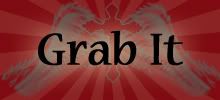

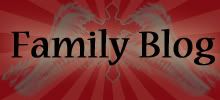



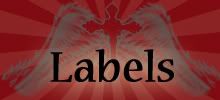


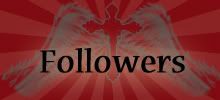

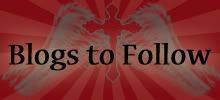
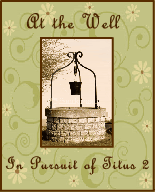

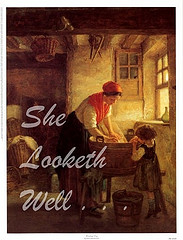




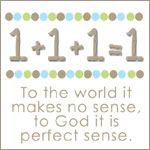

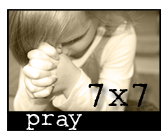




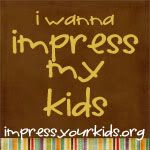





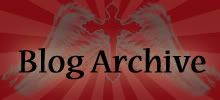




No comments:
Post a Comment